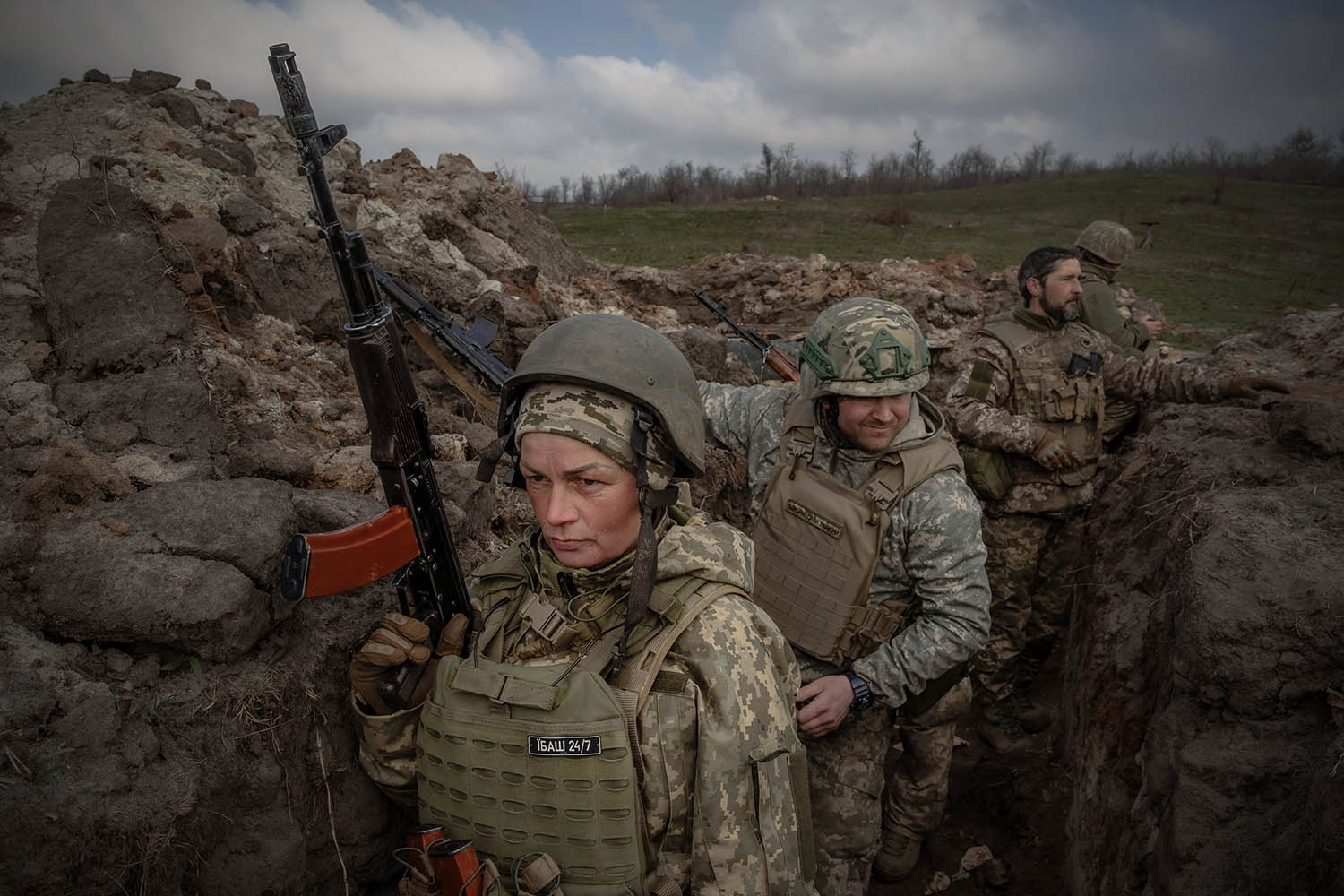After Donald Trump’s two-hour call to Vladimir Putin last Monday, the White House claimed a breakthrough, officially stating that Ukraine and Russia would “immediately” start talks towards a ceasefire and “an end to the war”.
It did not happen. A Kremlin spokesman said there were “no deadlines” for talks and it quickly became clear Trump had failed to put any pressure on Putin to halt the fighting. Now Trump appears ready to wash his hands of the conflict altogether.
“This isn’t my war,” he told reporters later that day. “We got ourselves entangled in something we shouldn’t have been involved in.” If there was no breakthrough soon, he added, he would “back away”.
Continued US support for Ukraine has never been more in doubt. So far the Trump administration has not approved a new military aid package for Ukraine, having only agreed a $310m sale of F-16 fighter jet parts and support with Kyiv.
Three years into the war, Ukraine faces an existential question: can it defeat Russia on the battlefield with only European help?
This may not be as daunting as it sounds. Earlier this year a senior American Nato commander in Germany was asked how long it would take to end the war using Nato forces already in Europe. The response: “Three weeks, two of which would be laying pipelines to get gas to the forces that are moving forward.”
In this scenario, Nato’s success depended heavily on American forces led by the US army’s V Corps and US air power located at Ramstein airbase in Germany, which plays host to the 86th Airlift Wing, made up of almost 30 squadrons, the majority of them involved in military transport.
In practice, Ukraine could never count on direct help from these forces for fear of nuclear escalation, even if Trump were determined to punish Putin. But the US commander’s message was clear: in more than three years of trying and failing to subdue Ukraine, Russia has demonstrated mainly weakness.
Its advance towards Kyiv in the early stages of the war was an embarrassing failure. Since the start of the full-scale invasion in 2022, according to the Kyiv Independent, which quoted Ukrainian military data, Russia has lost at least 10,000 tanks and almost 975,000 troops, including more than 1,000 in a single day last week. Elsewhere, a third of its Black Sea fleet has been sunk and its army has been forced to call on North Korea for help. Funding for Putin’s military industrial complex is, meanwhile, threatened by falling gas prices.
‘We are grateful for all kind of aid we receive – weapons and training’
Dmytro Pletenchuk, navy PR
Ukraine is bracing for the next phase of the war. Hundreds of its troops – from medics to combat forces – are training in Europe and the UK. “We are grateful for all kind of aid we get – weapons and training,” said Dmytro Pletenchuk, spokesperson for Ukraine’s navy, emphasising that air defence is crucial.
Kyiv has struggled to replenish depleted infantry platoons, but it holds an edge over Russia in drone technology, which has eclipsed the heavy artillery that dominated the war’s early stages.
Drones account for between 70% and 80% of Russian casualties, and homegrown factories are producing hundreds of thousands of them each month. Russian troops, who tend to attack in waves, have proved unable to cut through a nine-mile-wide (about 15km) “death zone” that Ukraine’s drones have established along the front line.
As a result, Putin’s forces have few military gains to show for three years of war, occupying roughly as much territory today as they did in 2014.
Some analysts are urging Ukraine to launch its own summer offensive. The last big push Kyiv launched relied on tanks. This time, it would be likely to lean on Ukraine’s newfound technological edge, using a combination of small and large drones to screen advancing troops and strangle Russian logistics.
Any Ukrainian offensive would still need outside help. Most European leaders have been unwavering in their support for Kyiv in terms of language. They now face the sterner test of whether they are prepared to plug the gap left by the US with respect to funds and weapons. The EU’s intention to support Ukraine is set out in a white paper covering provision of ammunition, air defence, drones, training and access to satellite intelligence, which is vital for monitoring Russian troop movements. But money and time are short.
The coalition of the willing, which includes the UK, has so far pledged only €21bn (£18bn) in additional military assistance, just over half the €40bn needed for a plan pitched in March by Kaja Kallas, the EU foreign policy chief, to compensate for dwindling US aid. Europe’s rearmament schedule stretches to 2030, while the need is immediate.
The UK will give £4.5bn this year, including a £450,000 package for radars, anti-tank mines and other hardware, and European allies have also promised 2m large-calibre ammunition rounds worth €5bn.But European leaders are struggling to make the case to voters for more aid to Ukraine at a time of high living costs at home. Pletenchuk’s resolve is unwavering. “This war doesn’t leave us the choice whether to fight or to capitulate,” he said. “We will continue fighting as long as we can and by all means we have.”


